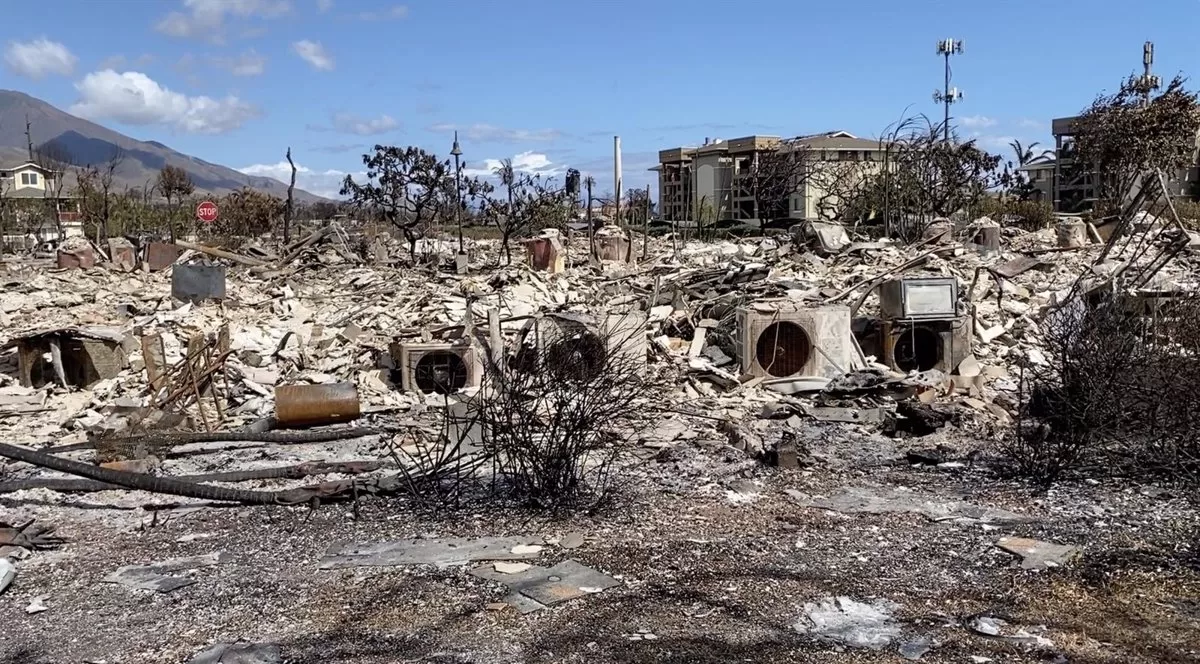Forest fires, soil and groundwater pollution, exploding industrial sites… Russia’s invasion of Ukraine is not only catastrophic for civilians, it is also catastrophic for their environment. The fauna and flora have been destroyed on numerous occasions since the start of the conflict and the resulting consequences can be serious.
War in Ukraine: the revolt of the “Global South”
This is the alert launched by Greenpeace, in partnership with the Ukrainian NGO Ecoaction. Both institutions have created an interactive map highlighting the environmental damage caused by the conflict for almost a year. Since February 24, 2022, 1.24 million hectares of nature reserve have been affected by the conflict and 3 million hectares of forests have been affected, reveals Greenpeace.
Nearly 900 attacks on the planet counted
Ecoaction has managed to identify nearly 900 cases of environmental destruction, information cross-checked by satellite images and mapped by Greenpace. For the time being, only about thirty attacks have been placed on the map.
With, in the first place, the strikes on factories and other strategic depots. In Kalynivka, near Kiev, Rivne (west), Donestk (east) or Odessa (south), oil depots were targeted during this first year of war, letting toxic smoke spread.
Why the war in Ukraine changed the world
In Luhansk in northeastern Ukraine, tanks of nitric acid were hit by Russian missiles on at least two occasions (April 5 and 9), leaving thick red smoke covering the city. With the risks of inflammation of the respiratory tract and attack of the cornea, the inhabitants had to stay cloistered at home.
In the Tuzly Lagoons Natural Park, off Odessa in the Black Sea, Ecoaction warns of cetacean mortality. Blinded and disoriented by the sonars of the Russian fleet, the marine animals can no longer find their bearings and cannot avoid the mines.
Steel and arugula
In addition to the abuses noted against the planet, the simple fact of waging war pollutes, recalls Greenpeace. Exploding, rockets and artillery “a cocktail of chemical compounds: carbon monoxide and dioxide, water vapour, nitric oxide (NO), nitrogen oxide (NO2), nitrous oxide (N2O), formaldehyde, hydrogen cyanide vapor (HCN ), nitrogen (N2)”. These products, once in the atmosphere, are likely to reinforce global warming in contact with oxygen with the creation in particular of carbon dioxide and water vapour. In addition, acid rain can be generated. They burn vegetation and are dangerous to humans, other mammals and birds.
The era of war: where is the Ukrainian conflict heading?
Environmental NGOs also take the example of metal fragments from shells. “The alloy of cast iron and steel, the material most frequently used for ammunition casings, contains not only the usual iron and carbon, but also sulfur and copper. These substances end up in the soil and can seep into groundwater and even contaminate human and animal food chains,” explains Greenpeace.
Allocate funds now
To warn about the environmental impact of the war is to think about the future of Ukraine, believe these associations which campaign for the defense of the environment. Despite territories that are difficult to access because “mine-ridden”, “we must draw attention to the environmental damage of this war so that environmental restoration is also taken into account in the discussions on the future of Ukraine”says Denys Tsutsaiev, Greenpeace CEE campaigner, from Kyiv.
War in Ukraine: Wings of Freedom
“This work will require tools, expertise and commitment, as well as significant funds. These funds should be allocated now, not after the war is over.”he adds.


